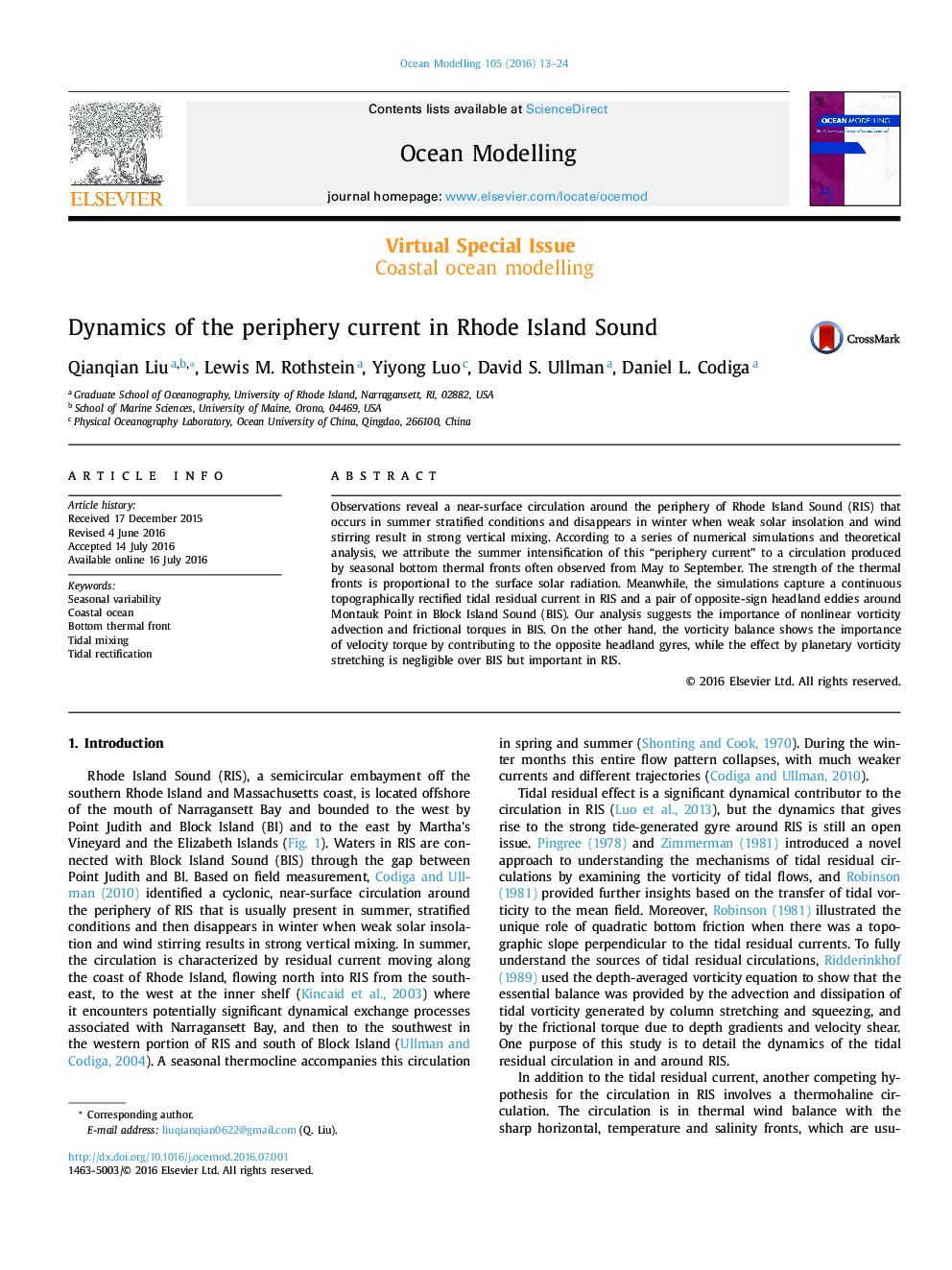| Article ID | Journal | Published Year | Pages | File Type |
|---|---|---|---|---|
| 6388013 | Ocean Modelling | 2016 | 12 Pages |
Abstract
Observations reveal a near-surface circulation around the periphery of Rhode Island Sound (RIS) that occurs in summer stratified conditions and disappears in winter when weak solar insolation and wind stirring result in strong vertical mixing. According to a series of numerical simulations and theoretical analysis, we attribute the summer intensification of this “periphery current” to a circulation produced by seasonal bottom thermal fronts often observed from May to September. The strength of the thermal fronts is proportional to the surface solar radiation. Meanwhile, the simulations capture a continuous topographically rectified tidal residual current in RIS and a pair of opposite-sign headland eddies around Montauk Point in Block Island Sound (BIS). Our analysis suggests the importance of nonlinear vorticity advection and frictional torques in BIS. On the other hand, the vorticity balance shows the importance of velocity torque by contributing to the opposite headland gyres, while the effect by planetary vorticity stretching is negligible over BIS but important in RIS.
Related Topics
Physical Sciences and Engineering
Earth and Planetary Sciences
Atmospheric Science
Authors
Qianqian Liu, Lewis M. Rothstein, Yiyong Luo, David S. Ullman, Daniel L. Codiga,
